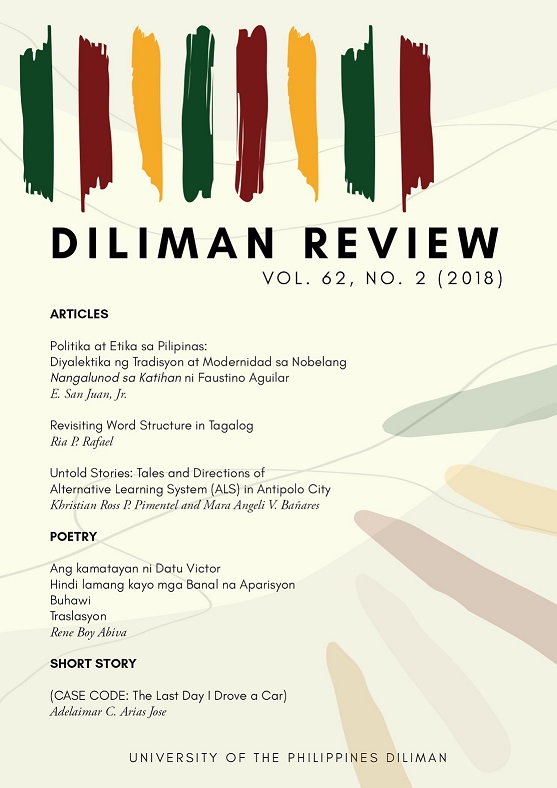Revisiting Word Structure in Tagalog
Abstract
Analyses of words with affixes in Tagalog have commonly been presented in a linear fashion: identify the root first, and whatever remains will be the affix(es). For example, Tagalog words maganda, gumanda, pagandahin, kagandahan, are all derived from the root ganda ‘beauty’. Grammar books would illustrate the structure of the example of derived words given above as having a rootword taking the affixes ma-, -um-, pa-…- hin, ka-...-an, respectively. When presented this way, it gives an impression that multiple affixes are attached simultaneously to a root. This study proposes otherwise. Instead of a simultaneous affixation, this paper looks into a step-by-step process, where a root takes an affix one step at a time. This type of analysis accounts for the individual meanings of each affix, instead of implying that a complex affix denotes a single meaning.
Published
2020-12-22
How to Cite
RAFAEL, Ria P..
Revisiting Word Structure in Tagalog.
Diliman Review, [S.l.], v. 62, n. 2, dec. 2020.
ISSN 0012-2858. Available at: <https://www.journals.upd.edu.ph/index.php/dilimanreview/article/view/7401>. Date accessed: 05 sep. 2025.
Issue
Section
Articles


